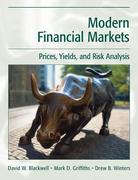

1. Inventory Problem (Python): Suppose over the 10 months, you expect the demand for your product to be as follows 10 Month Demand' 15.5 12 18 3 10. 12 5 3 At the beginning of the month 1. you have 6 units in inventory. In each month you can produce up to 15 units, and those units can be used to meet the current month's demand (along with any units in inventory). The maximum inventory that you can store is 10, and the cost of producing p units is given by the following fomula if p = 0 C(p) = 2 + p -0.05p? if 5>p> 1+0.5p otherwise Furthermore, if you decide to hold any q units, there will be a cost H(t.i) which depends on month(t) and the inventory you are holding (1) according to the following definition: H(t,i) = 0.94 xt otherwise For example, your cost from holding 5 units at the inventary at the end of month 2 would be 4.05 (0.9)2 x 5). Suppose you do not have any salvage value for the leftover inventory at the end of month 10 The Python program that computes the lowest-cost production plan meeting the specific demands are given below. Fill in the blank cells with the correct answers i. Problem Setup stages = startInventory inventory Capacity = productionCapacity= demand f=numpy zeros([stages + 2, inventory Capacity +1]) x=numpy.zeros([stages +1, inventory Capacity + 1], dtype=int) ii) For Loop fort in range(stages, 0, -1): for i in range(inventory Capacity + 1): minProduction maxProduction value= (Huge Number - HugeNumber) for p in range/minProduction maxProduction + 1): j= iii) Define production Cost and Holding Cost iv) Define moveValue ) Move Value and Value comparison (put either or >) if moveValue value: value=move Value bestMove -p f[t, i) = value x[ti] = best Move print("Optimal cost for starting inventory 6 is" + str(f[1, startinventory) solutionString = "Production amounts: i = startInventory fort in range(1, stages + 1): solutionString="" + str(x[t, i]) i=i+ x[t, i) - demand[t] vi) The policy matrix **" is given below. How much should we produce at Ist month and 2nd month if StartingInventory is 3? Month 1: Month 2: X= 0 0 0 0 0 0 0 0 0 0 0 | 15 14 13 12 11 10 9 8 7 6 51 1 5 5 5 2 1 0 0 0 0 0 0 115 14 13 12 11 10 9 8 7 6 51 1. Inventory Problem (Python): Suppose over the 10 months, you expect the demand for your product to be as follows 10 Month Demand' 15.5 12 18 3 10. 12 5 3 At the beginning of the month 1. you have 6 units in inventory. In each month you can produce up to 15 units, and those units can be used to meet the current month's demand (along with any units in inventory). The maximum inventory that you can store is 10, and the cost of producing p units is given by the following fomula if p = 0 C(p) = 2 + p -0.05p? if 5>p> 1+0.5p otherwise Furthermore, if you decide to hold any q units, there will be a cost H(t.i) which depends on month(t) and the inventory you are holding (1) according to the following definition: H(t,i) = 0.94 xt otherwise For example, your cost from holding 5 units at the inventary at the end of month 2 would be 4.05 (0.9)2 x 5). Suppose you do not have any salvage value for the leftover inventory at the end of month 10 The Python program that computes the lowest-cost production plan meeting the specific demands are given below. Fill in the blank cells with the correct answers i. Problem Setup stages = startInventory inventory Capacity = productionCapacity= demand f=numpy zeros([stages + 2, inventory Capacity +1]) x=numpy.zeros([stages +1, inventory Capacity + 1], dtype=int) ii) For Loop fort in range(stages, 0, -1): for i in range(inventory Capacity + 1): minProduction maxProduction value= (Huge Number - HugeNumber) for p in range/minProduction maxProduction + 1): j= iii) Define production Cost and Holding Cost iv) Define moveValue ) Move Value and Value comparison (put either or >) if moveValue value: value=move Value bestMove -p f[t, i) = value x[ti] = best Move print("Optimal cost for starting inventory 6 is" + str(f[1, startinventory) solutionString = "Production amounts: i = startInventory fort in range(1, stages + 1): solutionString="" + str(x[t, i]) i=i+ x[t, i) - demand[t] vi) The policy matrix **" is given below. How much should we produce at Ist month and 2nd month if StartingInventory is 3? Month 1: Month 2: X= 0 0 0 0 0 0 0 0 0 0 0 | 15 14 13 12 11 10 9 8 7 6 51 1 5 5 5 2 1 0 0 0 0 0 0 115 14 13 12 11 10 9 8 7 6 51








